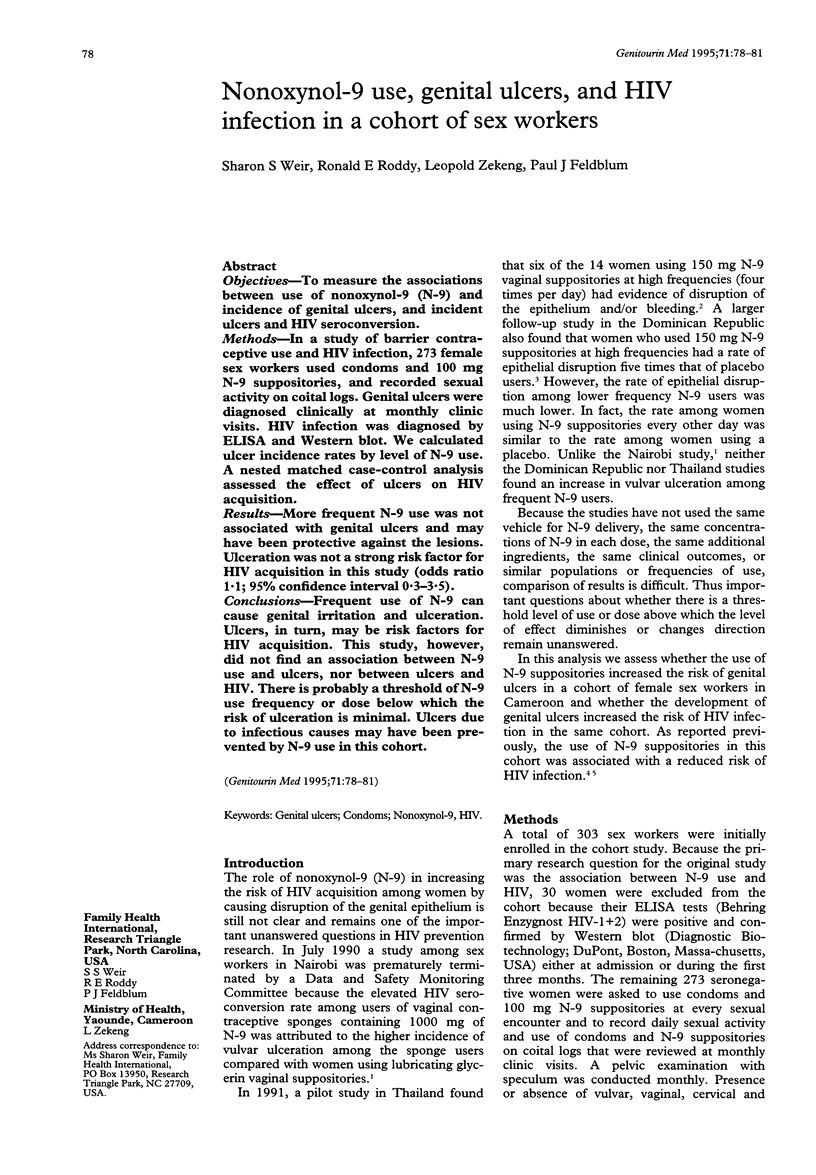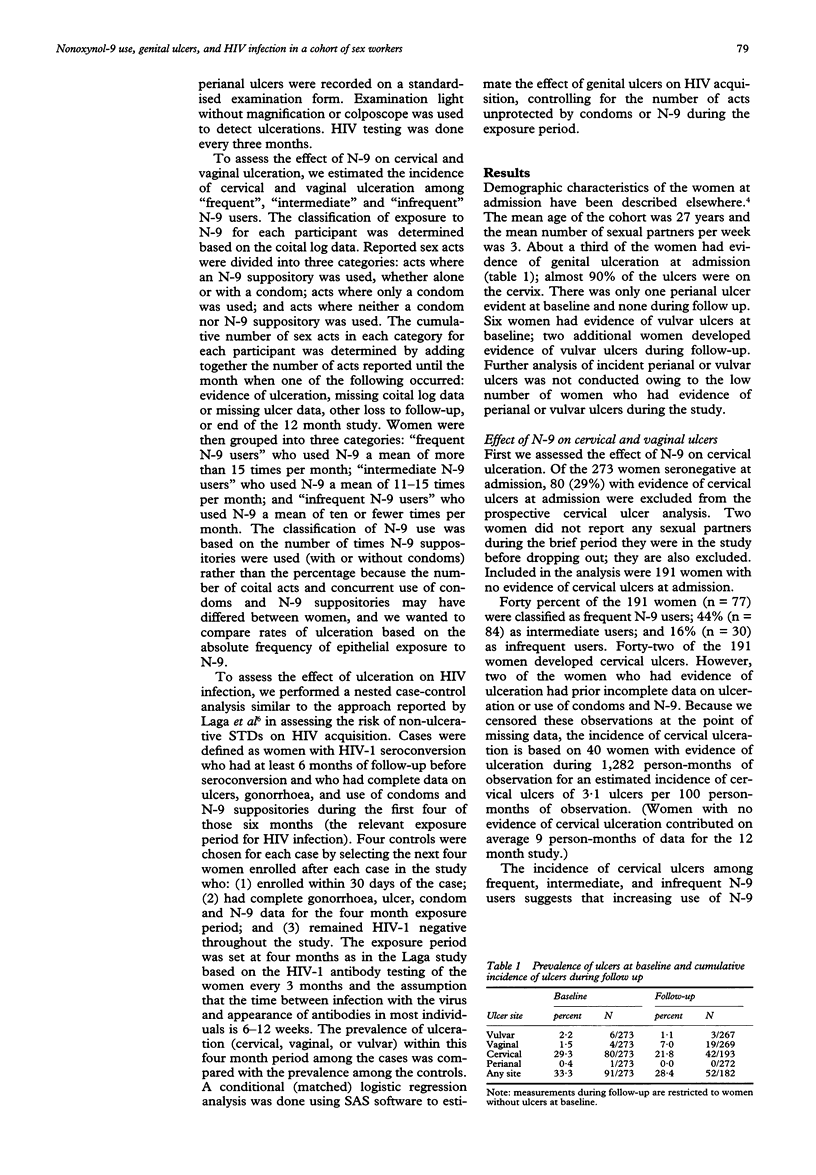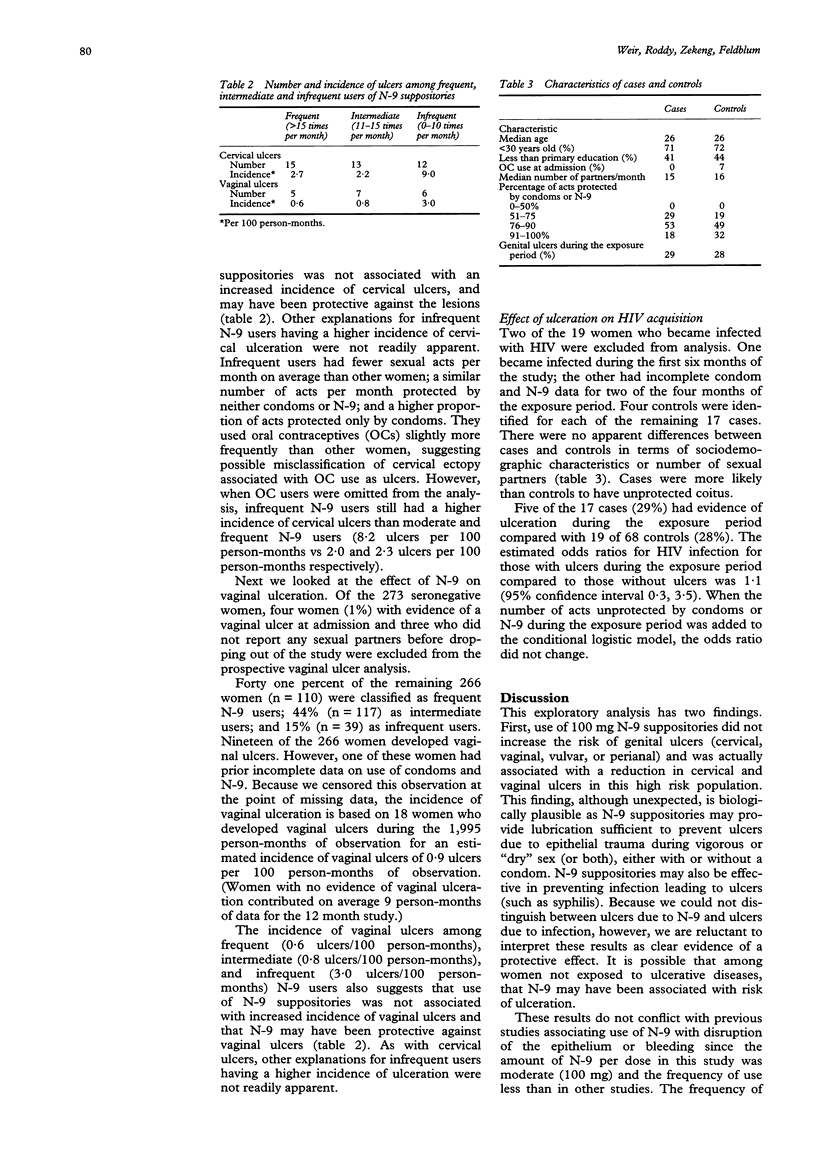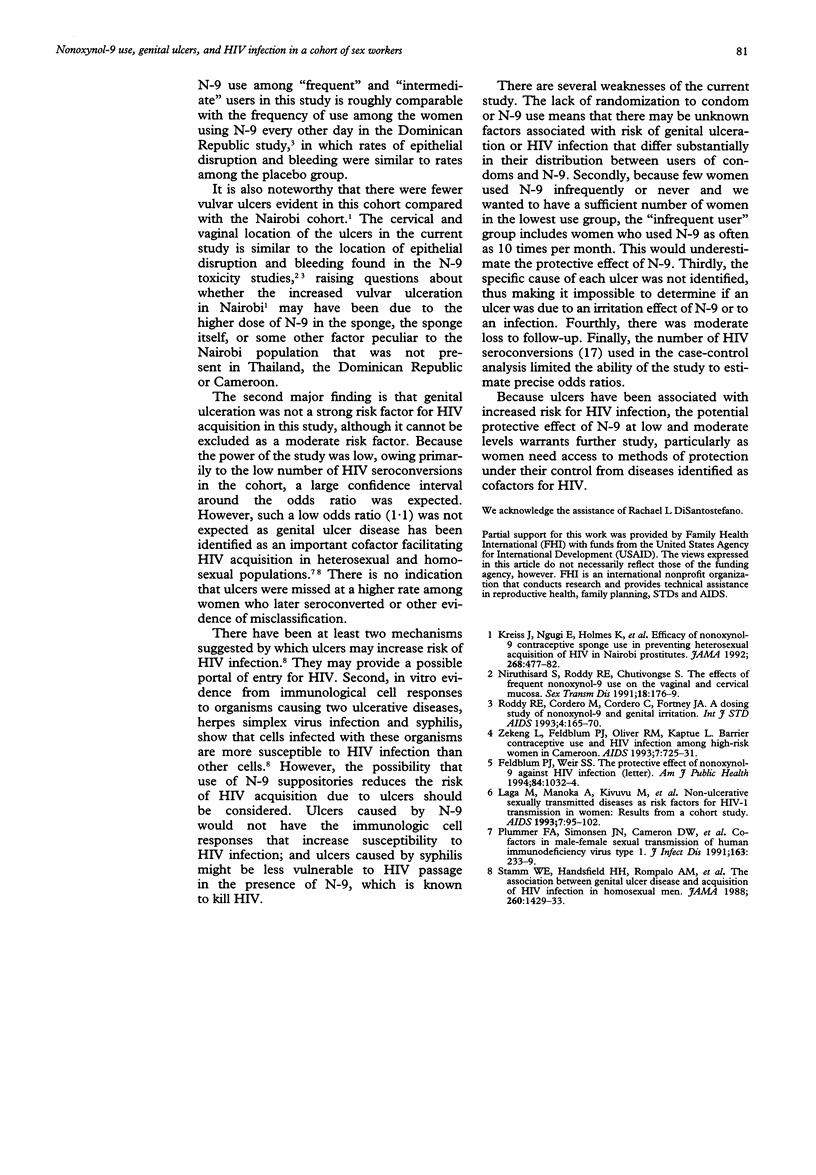Abstract
OBJECTIVES--To measure the associations between use of nonoxynol-9 (N-9) and incidence of genital ulcers, and incident ulcers and HIV seroconversion. METHODS--In a study of barrier contraceptive use and HIV infection, 273 female sex workers used condoms and 100 mg N-9 suppositories, and recorded sexual activity on coital logs. Genital ulcers were diagnosed clinically at monthly clinic visits. HIV infection was diagnosed by ELISA and Western blot. We calculated ulcer incidence rates by level of N-9 use. A nested matched case-control analysis assessed the effect of ulcers on HIV acquisition. RESULTS--More frequent N-9 use was not associated with genital ulcers and may have been protective against the lesions. Ulceration was not a strong risk factor for HIV acquisition in this study (odds ratio 1.1; 95% confidence interval 0.3-3.5). CONCLUSIONS--Frequent use of N-9 can cause genital irritation and ulceration. Ulcers, in turn, may be risk factors for HIV acquisition. This study, however, did not find an association between N-9 use and ulcers, nor between ulcers and HIV. There is probably a threshold of N-9 use frequency or dose below which the risk of ulceration is minimal. Ulcers due to infectious causes may have been prevented by N-9 use in this cohort.
Full text
PDF



Selected References
These references are in PubMed. This may not be the complete list of references from this article.
- Feldblum P. J., Weir S. S. The protective effect of nonoxynol-9 against HIV infection. Am J Public Health. 1994 Jun;84(6):1032–1034. doi: 10.2105/ajph.84.6.1032-a. [DOI] [PMC free article] [PubMed] [Google Scholar]
- Kreiss J., Ngugi E., Holmes K., Ndinya-Achola J., Waiyaki P., Roberts P. L., Ruminjo I., Sajabi R., Kimata J., Fleming T. R. Efficacy of nonoxynol 9 contraceptive sponge use in preventing heterosexual acquisition of HIV in Nairobi prostitutes. JAMA. 1992 Jul 22;268(4):477–482. [PubMed] [Google Scholar]
- Laga M., Manoka A., Kivuvu M., Malele B., Tuliza M., Nzila N., Goeman J., Behets F., Batter V., Alary M. Non-ulcerative sexually transmitted diseases as risk factors for HIV-1 transmission in women: results from a cohort study. AIDS. 1993 Jan;7(1):95–102. doi: 10.1097/00002030-199301000-00015. [DOI] [PubMed] [Google Scholar]
- Plummer F. A., Simonsen J. N., Cameron D. W., Ndinya-Achola J. O., Kreiss J. K., Gakinya M. N., Waiyaki P., Cheang M., Piot P., Ronald A. R. Cofactors in male-female sexual transmission of human immunodeficiency virus type 1. J Infect Dis. 1991 Feb;163(2):233–239. doi: 10.1093/infdis/163.2.233. [DOI] [PubMed] [Google Scholar]
- Roddy R. E., Cordero M., Cordero C., Fortney J. A. A dosing study of nonoxynol-9 and genital irritation. Int J STD AIDS. 1993 May-Jun;4(3):165–170. doi: 10.1177/095646249300400308. [DOI] [PubMed] [Google Scholar]
- Stamm W. E., Handsfield H. H., Rompalo A. M., Ashley R. L., Roberts P. L., Corey L. The association between genital ulcer disease and acquisition of HIV infection in homosexual men. JAMA. 1988 Sep 9;260(10):1429–1433. [PubMed] [Google Scholar]
- Zekeng L., Feldblum P. J., Oliver R. M., Kaptue L. Barrier contraceptive use and HIV infection among high-risk women in Cameroon. AIDS. 1993 May;7(5):725–731. doi: 10.1097/00002030-199305000-00018. [DOI] [PubMed] [Google Scholar]


